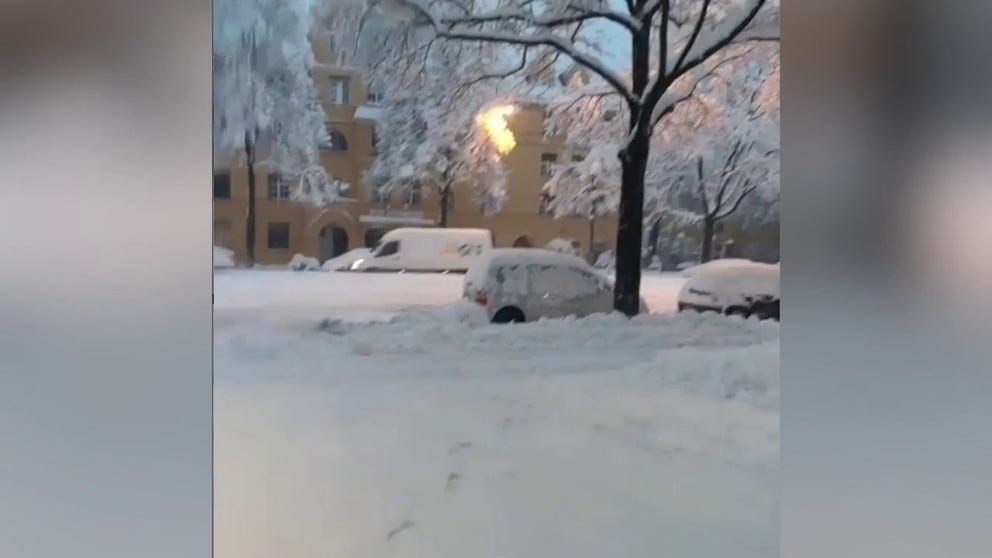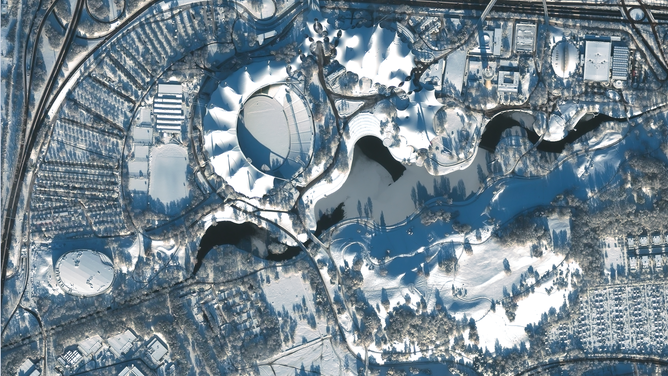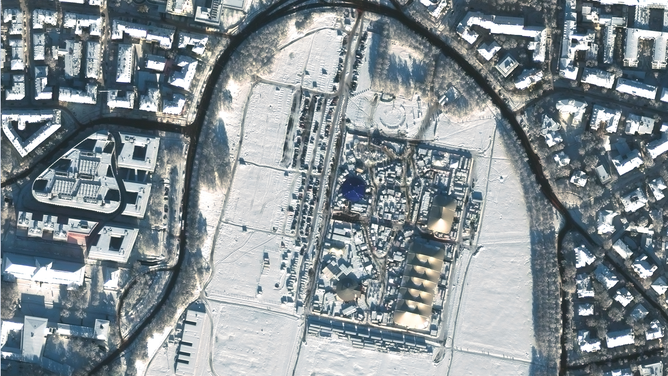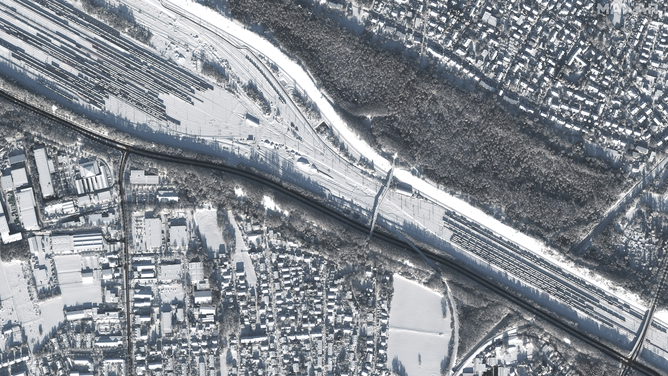See Germany’s heavy snowfall from space before it melts away
According to Germany’s national weather service, snowfall that fell in early December was record-breaking. Hundreds of flights were cancelled into and out of Munich – Germany’s third largest city.
Snow blankets neighborhood in Munich, Germany
A snowstorm dropped several inches of snow in some areas of southern Germany, including this neighborhood in Munich. (Courtesy: @marcomecarozzi471 / TikTok)
MUNICH, Germany – A winter storm that produced 1-2 feet of snowfall over much of southern Germany and neighboring Austria left behind a trail of powder that was visible from satellites in space.
Maxar Technologies Inc., a space technology company headquartered in Colorado, recently released satellite imagery that showed much of Munich, Germany, covered in the heavy snowfall.
WINTER WONDERLAND GREETS SURFERS AT MUNICH’S FAMOUS EISBACH RIVER WAVE AFTER HISTORIC SNOWSTORM
The images showed snow-covered rail tracks, parks and town centers, but major roadways appeared to be in good shape.
The record-breaking snow brought transportation to a halt as hundreds of flights were canceled into and out of Germany’s third-largest city, and rail restrictions were put in place.
Frozen precipitation and cold temperatures have plagued Europe in recent weeks, which put the continent on pace to see one of its most significant winters in recent years, but changes could be on the horizon.
After a spate of frozen rain on Tuesday, which triggered travel alerts and more airport delays and cancelations, a warmer weather pattern is on the way, which will keep frozen precipitation at bay.
SNOWSTORM PARALYZES TRAVEL IN SOUTHERN GERMANY
Europe warm-up
Forecast models show a pattern flip is on the way that’ll lead to warmer temperatures across the western parts of the continent.
A weather pattern that produces above-normal temperatures and abundant sunshine will lead to the quick melting of snowfall.
A weather outlook produced by European forecasters showed Munich could reach the 50s next week for highs and lows in the 40s.
With temperatures that are above average, the ground could lose at least an inch of snowfall per day.
According to climatology data, January is typically the coldest month in the German state of Bavaria, with lows that start out in the 20s and highs that struggle to reach 40 degrees.

Yearly average temperatures in Munich, Germany




